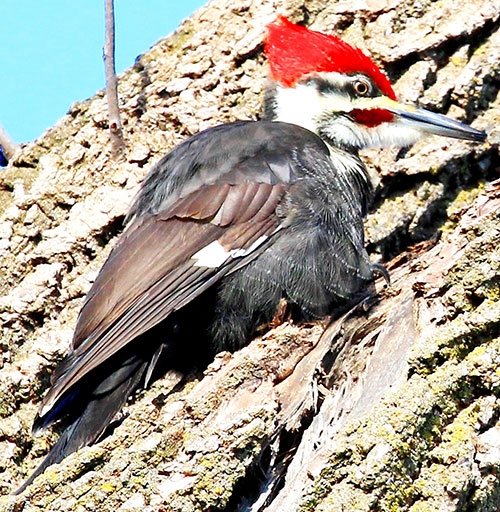You are here
Home ›Annual Yellow River bird count successful again in its 57th year

by Lissa Blake
The conditions for the 57th annual Yellow River bird count were perfect. That’s according to Larry Reis, the northeast Iowa naturalist who compiles the results each year.
Each year, the Yellow River bird count is among hundreds taking place across the nation. Data is compiled and submitted to the National Audubon Society.
The 2016 Yellow River bird count took place Tuesday, December 20. Eight area birders spent the day counting birds in a 15-mile radius spanning from north of Effigy Mounds to Waterville, Harpers Ferry, Wexford, Marquette and across the Mississippi River to Prairie du Chien, WI. Reis said December 20 was a sunny day that stayed around 30 degrees.
“We had eight observers, but we could always use more,” said Reis.
The December count spotted a total of 51 different species making up 2,912 individual birds. Highlights included two American black ducks, which were found along the Mississippi.
“They are similar in size to a mallard, but they are black and we typically see them on the east coast,” Reis said.
There was one golden eagle spotted, as well as 43 bald eagles. Reis said bald eagles have been making a comeback, but to see a golden eagle is somewhat unusual.
“It’s pretty cool to see a golden eagle. They are bigger and fiercer. They’ve even been known to take down a small deer,” said Reis.
Reis said when golden eagles decide to come down from the North Pole and winter in Iowa, they can be seen hunting the ridge tops for wild turkeys. “They also have been known to take raccoons, fox and bigger animals,” he said.
Other notable finds included two rough-legged hawks, six pileated woodpeckers and 10 American kestrels. “A kestrel is a smaller cousin to the peregrine falcon. They’re often seen perched on telephone wires. They eat voles, crickets, etc. Their population has really declined in recent years,” Reis said.
Birders also identified one northern shrike, commonly known as the “butcher bird.” “Unlike hawks that have sharp talons and beaks, these birds have to find something to impale their prey upon - either a sharp thorn or a piece of barbed wire. Once they kill them, they can work on them and pick them apart. They even wear a black mask through their face,” Reis explained.
Also seen were two golden-crowned kinglets and 12 eastern bluebirds. Reis said it was unusual to find one white-crowned sparrow and one white-throated sparrow, because they usually nest in the pine forests of Canada.
There were two purple finches, one red-winged blackbird and three brown-headed cowbirds. “The cowbird is the only bird around here that doesn’t build its own nest. It sneaks around and looks for another bird’s nest and lays a single egg there. They don’t do any parenting, and the other bird raises the cowbird just like their own,” said Reis.
He added the largest numbers seen on the count were the dark-eyed junco at 798, 388 mallard ducks and 337 house sparrows. Reis said although birders in the Yellow River area have only been participating in the bird count for less than 60 years, the National Audubon Society started cataloging birds in the early 1900s. “Our local information goes into a big database. Over time, it provides good information and bird numbers and patterns over a long span of time,” he said.
Reis said he welcomes anyone who thinks they might be interested in participating in the bird count to contact him at 563-534-7145 or email naturalist@winneshiekwild.com.

